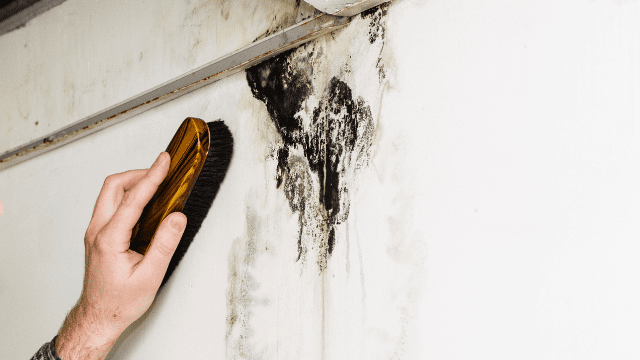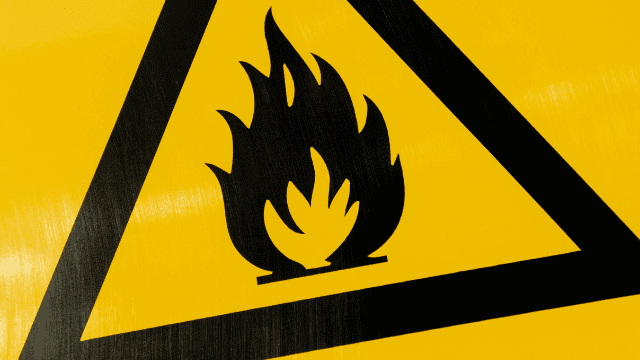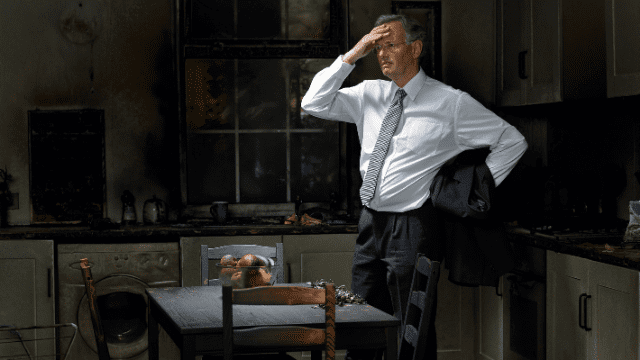Signs of excess indoor moisture
Aside from that familiar musty smell, there are other telltale signs you’ve got to watch out for to know there’s excess moisture somewhere inside your house.
- Damage on walls and ceilings
Peeling or cracked paint and lumps in the wallpaper can be caused by too much moisture inside your house. Take a closer look at your wall. If you notice any discoloration of the paint, then you can have a moisture problem at home.
- Musty smell on furniture
Furniture items kept too close to the walls can have molds in them if there’s excess water in your walls. This is because air cannot circulate properly and can cause condensation if moisture is building up behind your walls.
- Visible mold growth on baseboards and walls
If an area has excess moisture, such as in kitchens, basements, and bathrooms, mold will normally appear on walls, baseboards, and ceilings. So be sure to have it checked by a professional right away.
Preventing damage
Water damage is the number one problem that can weaken a home’s foundation, which can lead to serious structural damage in the long run.
Here’s how to prevent water damage in your home.
- Make sure you have a good drainage system.
Downspouts should direct water 5 to 10 feet away from your home. Gutters should be kept clean at all times to prevent clogging. Your yard is sloped at least 6 inches over a 10-foot span to keep water from getting down to your foundation, causing cracks and leaks.
- Test the sump pump regularly.
You want to make sure that your sump pump works when the storm comes. Check it at least once a year and perform tests before the heavy storm seasons. To do this, fill the pump pit with water. Wait for the float to rise to turn on the pump. Check to see if the water level falls.
- Inspect for leaks.
Leaks will lead to mold and mildew, as well as termites and ants. Inspect walls, cabinets, under pipes, ceilings, and toilets for dark spots or stains. You should also check your roof for missing or lose shingles. Have all leaks and other damages fixed immediately to prevent moisture and mold.
How does thermal imaging work?
Infrared cameras or thermal cameras can detect moisture, as well as other building failures, saving property owners and contractors thousands of dollars on repair. This is why these gadgets are becoming more and more available and affordable. Insurance carriers are also using these modern tools for the identification and detection of moisture in interior walls.
Infrared thermography (IT) is a method that uses a thermal camera to capture an image that’s invisible to the human eye through infrared light emitted by a particular object’s thermal condition or the heat or lack thereof. This tool looks like a camcorder that produces a live television picture of heat radiating an object. More sophisticated cameras can even measure the temperatures in the image. It will then produce false-color images, called thermogram or thermograph, to interpret thermal patterns easier.
How to measure correctly
A thermal camera can be used in the detection of moisture. It will detect infrared energy and converts it into an electronic signal, which is then processed by the device to produce a thermal image on a monitor. It is used in recent innovations because it delivers cost-efficient thermal analysis.
However, using an infrared camera is only part of the solution. You will need temperature measurement tools or moisture meters to provide accurate data, which in this case is the presence of moisture inside walls and ceilings. The thermal camera will help locate areas with potential water damage. Moisture meters, on the other hand, will help check the depth of water infiltration.
Do not compromise on quality
If you suspect that your home is suffering from water damage somewhere, you should immediately call the experts to find the problem for you. Be sure to contact a reputable company to ensure that you do not compromise on quality.





